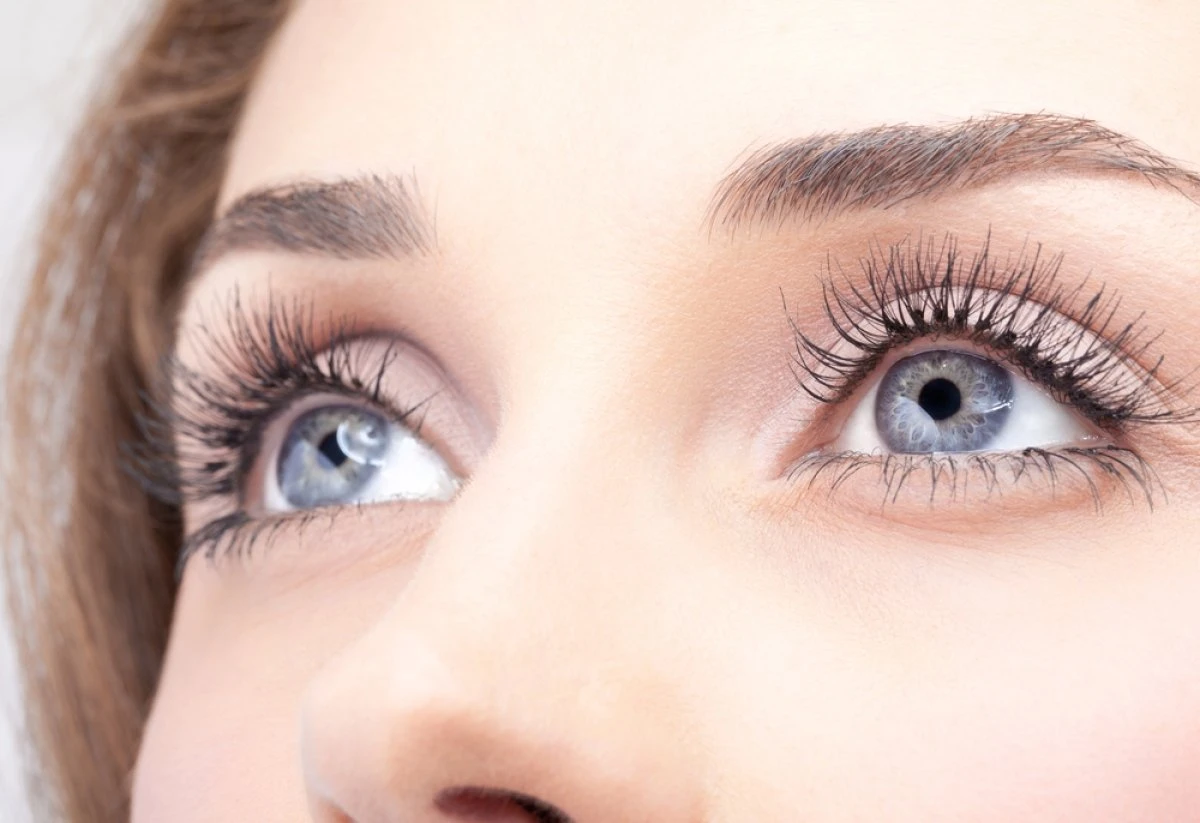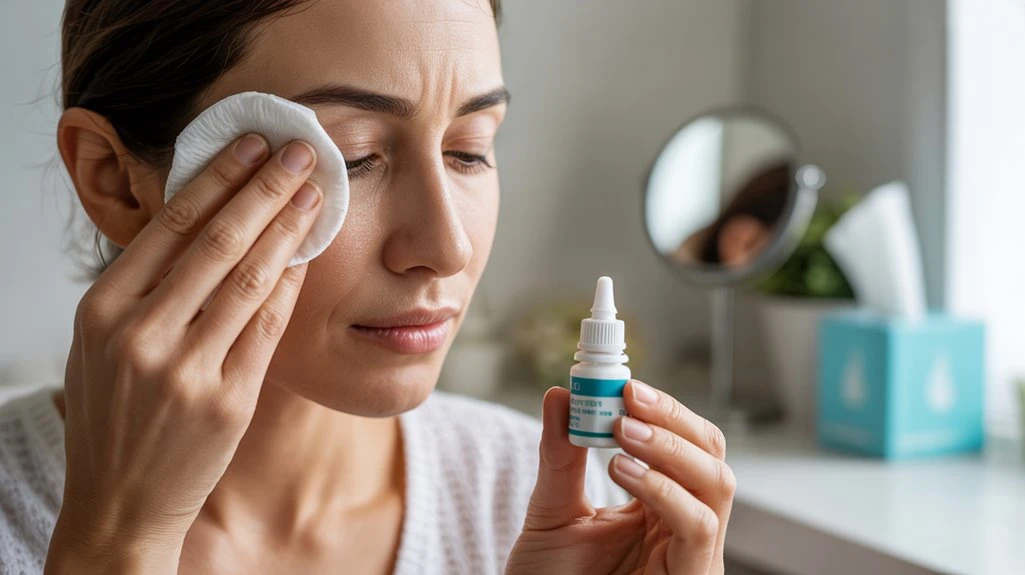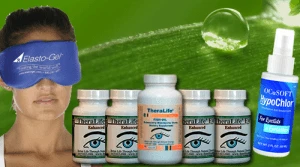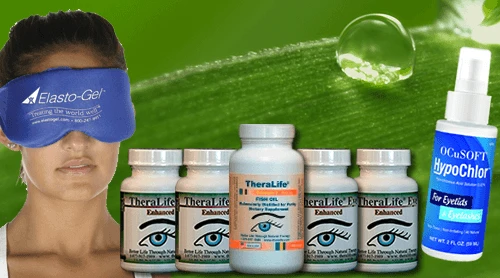To effectively address watery eyes, consider integrating TheraLife‘s unique approach to eye care into your routine. TheraLife is the only company providing oral eye treatment options, offering a distinct advantage for those seeking comprehensive relief. Their products target underlying causes of eye discomfort, such as blepharitis and dry eyes, by addressing inflammation and supporting overall eye health.
To begin, identify and avoid triggers like allergens or irritants. TheraLife’s oral supplements work from within to stabilize tear production and improve eyelid hygiene. For those with allergies, they offer specialized solutions that complement traditional antihistamine drops, providing a holistic approach to eye care.
TheraLife also offers guidance on maintaining an allergen-free environment, such as using HEPA filters, and provides insights on dietary adjustments to support eye health. If symptoms persist, worsen, or if you experience pain or vision changes, it’s crucial to seek prompt ophthalmic evaluation to rule out underlying pathology.
Incorporating TheraLife’s products into your eye care regimen can optimize lasting relief and prevent potential complications, providing a tailored strategy for eye health. Visit TheraLife’s website to explore their full range of products and learn more about their innovative approach to treating eye conditions.
Powerful Oral Treatment for Watery Eyes – From Inside Out
Add To Cart
Key Takeaways
- Apply a warm compress to your closed eyelid for 5–10 minutes to soothe irritation and promote tear film stability.
- Gently clean your eyelids and lashes daily using sterile wipes or diluted baby shampoo to remove irritants and maintain hygiene.
- Avoid exposure to allergens and irritants by keeping windows closed, using air purifiers, and minimizing contact with dust or smoke.
- Use antihistamine or mast cell stabilizer eye drops if allergies are suspected, following package instructions or your doctor’s advice.
- Seek medical attention if watery eye persists, worsens, or is accompanied by pain, vision changes, or discharge.
Understanding the Common Causes of Watery Eyes
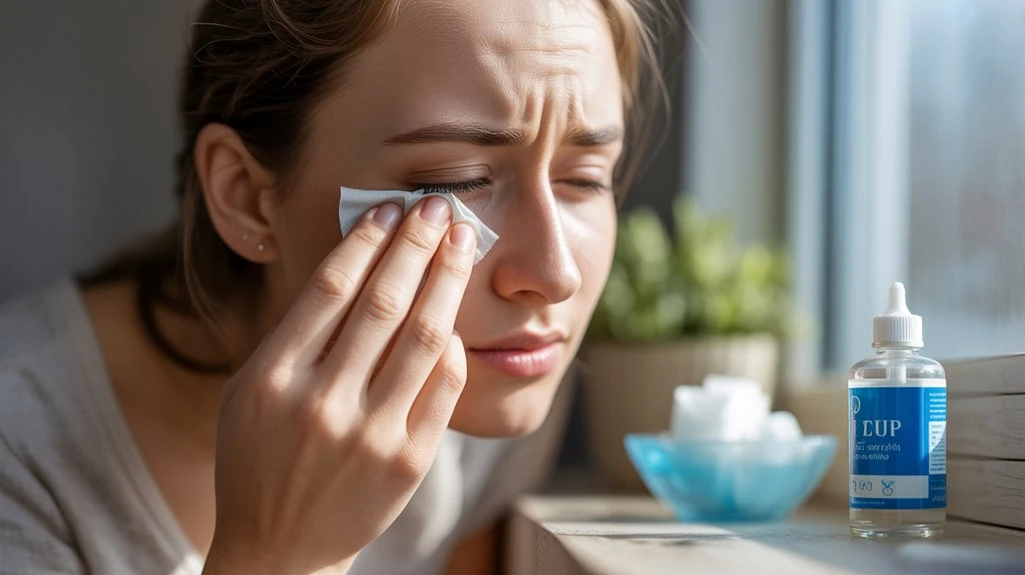
Although watery eyes often seem benign, they can result from a variety of underlying conditions that disrupt normal tear production or drainage.
You may experience excessive tearing due to allergic reactions—your immune system’s response to allergens like pollen, dust mites, or animal dander triggers histamine release, causing conjunctival inflammation and increased tear secretion.
Environmental factors also play a significant role; exposure to wind, smoke, or chemical irritants can stimulate reflex tearing by irritating the ocular surface.
Additionally, dry air or low humidity environments may paradoxically lead to overproduction of tears as your eyes attempt to compensate for the dryness.
Recognizing the influence of these causes is essential for targeted intervention, as management strategies will differ based on whether the etiology is mainly allergic or environmental.
Furthermore, wearing outdoor glasses can provide a protective barrier against wind, dust, and allergens, significantly reducing tearing and discomfort.
Recognizing When It’s More Than Just Irritation
You should monitor for symptoms such as persistent tearing, vision changes, or significant pain, as these can indicate underlying pathology beyond simple irritation. Evidence shows that conditions like infection, nasolacrimal duct obstruction, or eyelid malposition require prompt clinical assessment. If you notice these warning signs, seek ophthalmologic evaluation to prevent complications. Persistent eye dryness and irritation could also be a sign of Sjögren’s syndrome, an autoimmune disease that may require comprehensive evaluation and treatment.
Signs of Serious Issues
When persistent watery eyes accompany symptoms such as severe pain, vision changes, excessive redness, or discharge, these signs may indicate underlying pathology beyond simple irritation. Recognizing symptom severity helps differentiate benign causes from more serious ocular conditions, such as keratitis, uveitis, or acute angle-closure glaucoma. You should be vigilant if you notice:
- Sudden or progressive vision loss
- Intense ocular pain or photophobia
- Profuse mucopurulent or bloody discharge
- Marked periorbital swelling or eyelid abnormalities
These clinical features often prompt ophthalmologists to employ targeted diagnostic tests, including slit-lamp biomicroscopy, fluorescein staining, or intraocular pressure measurements, to determine the etiology. It’s crucial to understand that uveitis can lead to severe vision impairment if not managed properly, and it may require a combination of medical therapies and lifestyle changes for effective control.
When to Seek Help
Identifying warning signs of more serious ocular conditions allows for timely intervention and prevents potential complications. If your watery eye persists despite home management or is accompanied by pain, vision changes, or discharge, you should seek professional evaluation. Maintaining a symptom diary helps you track patterns, duration, and associated symptoms, which provides valuable information for your clinician. An eye examination performed by an ophthalmologist or optometrist can detect underlying pathology such as infection, blocked tear ducts, or ocular surface disease. Tear film health is critical in maintaining ocular surface integrity and function.
| Symptom | Action Required |
|---|---|
| Persistent tearing | Schedule eye examination |
| Pain, redness, swelling | Seek urgent medical attention |
| Blurred vision | Immediate specialist review |
Don’t delay consultation if you notice escalating symptoms. Early detection and targeted therapy reduce the risk of complications and preserve ocular health.
Trying At-Home Remedies for Quick Relief
You can initiate symptomatic relief for a watery eye with evidence-based at-home techniques such as warm compress application and gentle eye massage. Clinical studies suggest that these interventions may help promote meibomian gland function and facilitate tear drainage. Confirm you use sterile materials and light pressure to minimize the risk of introducing infection or exacerbating irritation. Regular eye exams are recommended to monitor the progression of Meibomian Gland Dysfunction and ensure timely adjustments in treatment plans.
Warm Compress Application
One effective at-home intervention for alleviating watery eyes involves the application of a warm compress to the affected area. Clinical evidence suggests that this method can promote meibomian gland function, enhance tear film stability, and reduce mild inflammation. To maximize warm compress benefits, it’s important to use a proper applying technique. Begin by soaking a clean cloth in warm (not hot) water, then wring it out and place it gently over your closed eyelids for 5–10 minutes. Repeat as needed for symptom relief. Consistent use of warm compresses can also enhance local circulation and drainage of blocked meibomian glands. Key clinical considerations include:
- Maintains ideal temperature to avoid thermal injury
- Facilitates liquefaction of clogged meibum in eyelid glands
- Improves tear drainage and ocular surface comfort
- Reduces eyelid irritation associated with mild blepharitis
Consistent use promotes symptomatic relief in many cases.
Gentle Eye Massage
A gentle eye massage may seem like a practical approach for quick relief from watery eyes, but clinical evidence doesn’t support its effectiveness and, in some cases, may even exacerbate symptoms. While you may encounter recommendations for eye acupressure techniques or gentle periorbital massage, current ophthalmological guidelines caution against manipulating the delicate tissues around the eye, especially if you’re experiencing excessive tearing. Such actions can increase irritation, disrupt the tear film, or introduce pathogens, potentially worsening epiphora. Instead, prioritize non-invasive interventions. If you seek relaxation, consider relaxation breathing exercises, which can help reduce ocular discomfort associated with tension or fatigue without direct contact. Good hygiene practices are also crucial for managing conditions like blepharitis, which can contribute to watery eyes. Ultimately, consult an eye care professional before trying at-home remedies, as improper techniques may compromise ocular surface integrity and hinder recovery.
Adjusting Your Environment to Reduce Triggers
Although environmental factors often exacerbate epiphora, targeted modifications can minimize exposure to common irritants such as dust, pollen, and strong odors.
By prioritizing environmental adjustments and effective trigger identification, you can help reduce reflex tearing and ocular surface irritation. Evidence suggests that maintaining a controlled indoor environment substantially decreases allergen and particulate exposure, directly impacting tear film stability. Geographical location influences eye health, particularly dry eye syndrome, highlighting the importance of adjusting living conditions to mitigate symptoms.
Consider implementing the following strategies:
- Use HEPA filters and maintain regular air purifier maintenance to decrease airborne particulates.
- Keep windows closed during high pollen seasons to limit allergen intrusion.
- Avoid using strong cleaning agents or air fresheners that release volatile organic compounds.
- Regularly clean soft furnishings and vacuum with a HEPA-filtered device to reduce dust accumulation.
These targeted interventions optimize your surroundings, supporting ocular comfort and reducing unnecessary lacrimation.
Managing Allergies and Other Underlying Conditions
Because persistent epiphora often signals an underlying condition, you’ll need to systematically address contributory factors such as allergic conjunctivitis, blepharitis, or dry eye syndrome to achieve lasting relief.
Initiate allergy management by using antihistamine or mast cell stabilizer eye drops, and consider oral antihistamines if your symptoms are systemic.
For underlying conditions like blepharitis, targeted therapies—such as topical antibiotics or anti-inflammatory agents—are vital.
If dry eye syndrome contributes to your watery eye, lubricating drops or prescription medications that boost tear production can stabilize the tear film.
It’s important to note that aging naturally increases the likelihood of developing dry eyes, which can contribute to watery eyes.
It’s imperative to obtain an accurate diagnosis, as effective management hinges on tailored interventions for each specific etiology.
Consult an ophthalmologist to guide your therapy and guarantee thorough treatment of all underlying conditions contributing to your symptoms.
Practicing Good Eye Hygiene Daily

Maintaining rigorous eyelid and lash hygiene reduces debris accumulation and microbial colonization, both of which exacerbate tear film instability and worsen epiphora.
By integrating evidence-based eye cleanliness protocols into your daily routines, you can considerably decrease the risk of chronic watery eyes. Scrupulous lid hygiene is essential for minimizing inflammatory triggers and maintaining a healthy ocular surface. Using hypoallergenic and ophthalmologist-tested products for cleaning can further prevent irritation and ensure the safety of sensitive eyes.
To optimize your eye cleanliness, consider these clinical recommendations:
- Clean your eyelids and lashes daily with a sterile, preservative-free eyelid wipe or diluted baby shampoo solution.
- Always wash your hands thoroughly before touching the periocular area to prevent pathogen transfer.
- Remove all cosmetic products from the eyelids before sleep to avoid pore occlusion and irritation.
- Replace towels and pillowcases regularly to minimize allergen and microbe exposure.
Implementing these routines preserves ocular surface health and mitigates persistent epiphora.
Knowing When to Seek Medical Attention
If your watery eye persists despite strict eyelid hygiene and other conservative measures, you should recognize clinical thresholds that warrant prompt ophthalmologic evaluation.
Symptom assessment becomes critical if you experience visual disturbances, severe pain, photophobia, or purulent discharge. These findings may indicate underlying pathologies such as dacryocystitis, keratitis, or nasolacrimal duct obstruction requiring specialized treatment options.
Additionally, unilateral tearing with eyelid swelling or recurrent infections suggests the need for further diagnostic workup, including slit-lamp examination or lacrimal system probing.
Don’t delay seeking professional care if there’s a sudden change in symptoms or associated systemic signs like fever. Early intervention optimizes outcomes and prevents complications.
Ultimately, persistent or worsening symptoms after conservative management signal it’s time for expert evaluation and consideration of targeted therapeutic modalities.
Powerful Oral Treatment for Watery Eyes – From Inside Out
Add To Cart
Frequently Asked Questions
Can Certain Foods Make Watery Eyes Worse?
Yes, certain foods can exacerbate watery eyes, especially if you’re sensitive to allergy triggers like dairy, nuts, or shellfish.
These foods may stimulate histamine release, increasing lacrimal gland activity and tear production.
Processed foods high in sodium can also disrupt hydration levels, further irritating ocular surfaces.
You should consider eliminating suspected allergens from your diet and maintaining ideal hydration to reduce inflammation and stabilize tear film production for better ocular comfort.
Are There Specific Eye Drops to Avoid for Watery Eyes?
Just as Odysseus navigated treacherous waters, you must choose eye drops wisely.
Some antihistamine drops can paradoxically worsen dryness, increasing reflex tearing.
Steer clear of drops with preservatives, as chronic use may irritate the ocular surface and exacerbate symptoms.
Instead, opt for preservative free options, which clinical trials show to be less likely to cause surface toxicity or allergic reactions.
Always consult your ophthalmologist before starting any new ophthalmic medication.
Is Watery Eye a Symptom of Any Vitamin Deficiency?
Watery eye can sometimes be associated with vitamin deficiency symptoms, particularly deficiencies in vitamin A, which is essential for maintaining ocular surface integrity.
If you lack adequate vitamin A, you might experience dry eyes initially, but paradoxically, this dryness can trigger reflex tearing.
To address this, make sure you’re consuming nutrient rich foods like carrots, sweet potatoes, and leafy greens.
However, persistent symptoms warrant a clinical evaluation to rule out other underlying ophthalmic conditions.
Can Contact Lenses Cause or Worsen Watery Eyes?
You could wear the cleanest, most high-tech lenses in the galaxy, but if you ignore contact lens hygiene, you’ll almost guarantee eye irritation and a flood of watery eyes.
Contact lenses can absolutely cause or worsen watery eyes, especially if they’re dirty, damaged, or poorly fitted.
Clinical evidence shows that improper lens care leads to foreign body sensation, tear film instability, and reflex tearing—turning your eyes into nonstop fountains until you address the root cause.
Does Screen Time Contribute to Chronic Watery Eyes?
You may notice increased tear production and chronic watery eyes with prolonged screen time due to eye strain and reduced blink rate.
Clinically, digital device usage leads to evaporative dry eye, triggering reflex tearing as a compensatory mechanism.
Studies confirm that extended periods of screen exposure disrupt tear film stability and contribute to ocular surface irritation.
Managing screen time and employing the 20-20-20 rule can mitigate these adverse effects on ocular health.
Powerful Oral Treatment for Watery Eyes – From Inside Out
Add To Cart
Conclusion
Theralife offers a unique and effective approach to managing watery eyes and various ocular conditions through its exclusive oral eye treatment care. As the only company providing this innovative solution, Theralife stands out by combining natural ingredients with cutting-edge research to enhance eye health from the inside out.
Their products not only address symptoms but also target the root causes of conditions such as blepharitis, dry eyes, and uveitis. By taking a comprehensive approach, Theralife products help reduce inflammation, improve tear quality, and support overall eye wellness.
Customers benefit from Theralife’s commitment to prevention and holistic care, ensuring long-term relief and sustained ocular comfort. Whether dealing with persistent tearing or seeking to enhance eye health, Theralife provides a reliable, evidence-based solution that partners with you for optimal eye care. Prioritize your eye health with Theralife’s proven products and experience the difference.

